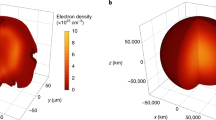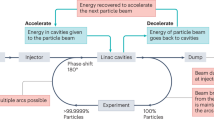Abstract
THE intensity of gas discharges in switching devices for radar duplexers is such that clean-up of the rare-gas filling is an important factor, and may determine the life of such valves. Radioactive krypton, Kr-85 1, has been used for measuring the rate of rare-gas clean-up in pre-T.R. valves, with promising results. Krypton-85 has a half-life of ten years and emits mainly beta radiation (680 keV.) and some gamma radiation (500 keV.). Thus it is a most convenient isotope to use, the radiation being readily detected by Geiger-counter or photographic techniques.
This is a preview of subscription content, access via your institution
Access options
Subscribe to this journal
Receive 51 print issues and online access
$199.00 per year
only $3.90 per issue
Buy this article
- Purchase on Springer Link
- Instant access to full article PDF
Prices may be subject to local taxes which are calculated during checkout
Similar content being viewed by others
References
Radioisotope Conference, vol. 2 (1954).
Author information
Authors and Affiliations
Rights and permissions
About this article
Cite this article
HARRIS, D., HAWKINS, P. Use of Krypton-85 in measuring Gas Clean-up Rates. Nature 177, 285–286 (1956). https://doi.org/10.1038/177285b0
Issue Date:
DOI: https://doi.org/10.1038/177285b0
This article is cited by
-
‘Clean-up’ of Radioactive Gases used for Surface Studies
Nature (1956)
Comments
By submitting a comment you agree to abide by our Terms and Community Guidelines. If you find something abusive or that does not comply with our terms or guidelines please flag it as inappropriate.



